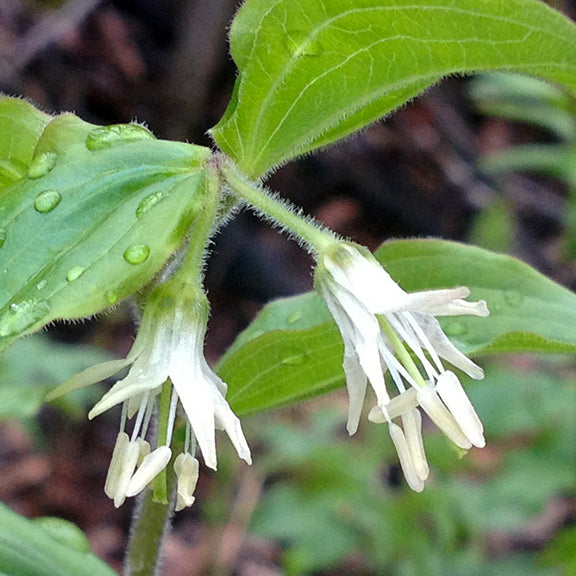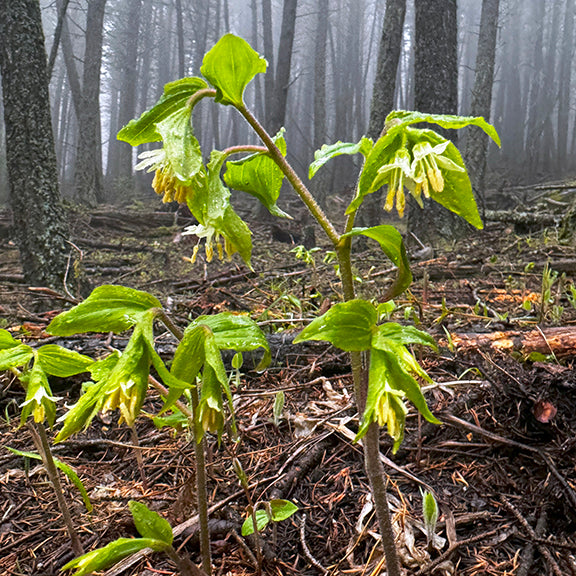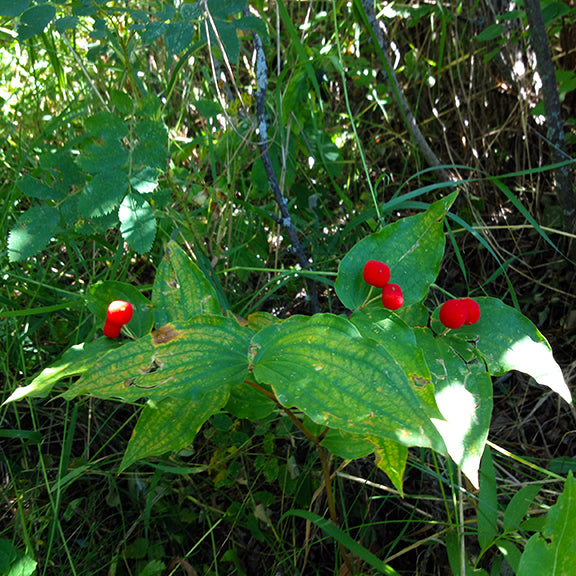Wild About Flowers
Prosartes trachycarpa - Rough Fruited Fairybells
Prosartes trachycarpa - Rough Fruited Fairybells
Couldn't load pickup availability
Rough-Fruited Fairybells features arching stems adorned with soft, lance-shaped green leaves, while its elegant, bell-shaped pale yellow flowers dangle beneath the foliage from late spring to early summer, attracting native bees and other small forest pollinators. As the season progresses, these blooms give way to bright red, rough-textured berries, providing an important food source for birds and wildlife. Well-suited for self-sustaining, low-maintenance landscapes, this native plant adds natural charm to shaded gardens and thrives as an understory species, enhancing beauty, biodiversity, and seasonal interest.
A delicate yet hardy woodland perennial, Rough-Fruited Fairybells grows in moist woodlands, shaded riverbanks, and montane forests, often thriving in rich, humus-filled soils. It spreads moderately through rhizomes, forming loose colonies in shaded areas. Moderately resistant to grazing, deer may browse young shoots, but mature plants are typically left undisturbed.
Bloom Times & Plant Sizes
Bloom Times & Plant Sizes
Important Information - The "Bloom Period" is an indicator of the time period within which the wildflowers will bloom and does not describe the time period that a single plant will bloom. The "Sizes" listed are intended to be a general guideline to consult during plant selection. - Plant growth and bloom times will vary depending on geographical location & individual site conditions.
Edible & Medicinal Info Disclaimer
Edible & Medicinal Info Disclaimer
The Edible & Medicinal information on this site is for informational purposes only and should not be acted on without thorough research and professional guidance. We are not responsible for any adverse effects resulting from the use of or misidentification of plants.
Share




Plant Specifics
Seeds Per Pack
Seed packs are currently unavailable.
Light Conditions
- Part Shade
- Shade
Soil Conditions
- Moist
- Rich
- Loam
- Well Drained
- Sandy
Height
- 12" - 24"
- 24" - 36"
Width
- Spreading
Bloom Colour
- Yellow
- Green
Month of Bloom
- May
- June
Vigorousness
- Slow
- Moderate
Deer Resistance
- Moderate
Features
- Birds
- Bees
- Berries
- Fall Color
- Urban Spaces
- Rural Spaces
- Medicinal Properties
- Edible Parts
Chinook Exposure
- Sheltered
- Moderate
Distribution Info
Native to BC, AB, SK, MB, ON, YT, and NT, extending into the western and northern U.S.. Common in moist, shady environments, such as wooded slopes, aspen groves, and areas near streams, ranging from lowland regions to mid-elevation forests.
Traditional Edible & Medicinal Info
Indigenous groups used Prosartes trachycarpa for medicinal and practical purposes. Root infusions were taken to treat stomach ailments and fevers, while the berries were occasionally consumed but not widely used as a food source. Not considered highly toxic, but berries may cause mild digestive upset if consumed in large amounts.




